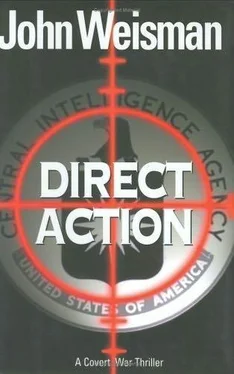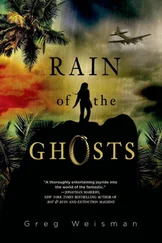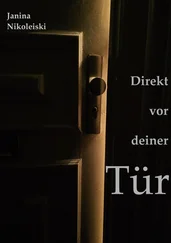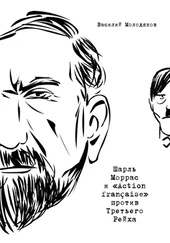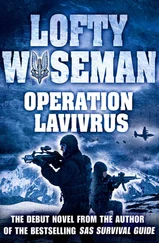“I understand.” Even though he did understand, Tom still felt a little out of his depth. He was a capable case officer. Which meant he had honed all the talents necessary to spot, assess, develop, and recruit agents to spy on behalf of the United States. He’d had successful tours in Egypt, France, Sudan, and Dubai. In that last post, he’d actually recruited an agent who had access to one of the bankers who helped funnel al-Qa’ida money in and out of the Emirates. Later, as a branch chief at the Counterterrorism Center, he’d specialized in identifying the links between certain members of the Saudi royal family and the private charities that through monetary sleight of hand bankrolled Islamist terrorists around the globe. But when it came to dealing with terrorists-really dealing with them, as in eliminating them-Tom was ill-equipped.
Reuven was different. Before going to Mossad, he’d served in Sayeret Mat’kal, the Israeli Defense Force’s most elite special-operations unit. A Moroccan-born Jew who’d emigrated to Israel as an eleven-year-old in 1956, Reuven spoke native Arabic, as well as fluent French, German, Turkish, and passable Farsi. As a soldier, he had penetrated terrorist camps in Syria and Jordan, identifying, stalking, and single-handedly killing more than half a dozen of Israel’s most wanted enemies. As Mossad chief in Ankara-his final posting-he had helped the Turks eliminate a score of Kurdistan Workers Party (PKK) terrorists who had allied themselves with radical Islamist groups and helped attack Jewish targets in Turkey.
In April 1988, as a senior-level Mossad officer, Reuven spent nineteen harrowing days performing advance reconnaissance on PLO operations chief Abu Jihad’s home in the Tunis suburb of Sidi Bou Said. Working solo, under Lebanese cover, he flew to Tunisia. There, he researched and mapped the infiltration and exfiltration routes to be used by the Sayeret Mat’kal shooters who on the night of April 15-16, would execute the man who’d helped form Black September and was responsible for hundreds of Israeli deaths. Six weeks later, Reuven was presented Israel’s second highest award for valor, the Ott Ha’Oz, for his bravery and initiative.
It wasn’t his only award. On June 8, 1992, as Mossad’s deputy station chief in Paris, Reuven had led a quickly mounted operation to kill Atif B’sisou, the acting head of Fatah’s intelligence organization, as B’sisou drove his brand-new Mercedes SUV through Paris on the way to the Marseille- Tunis ferry.
B’sisou’s last-minute schedule changes were betrayed to Mossad’s Paris station by Mahmoud Yassin, a Tunis-based midranking PLO intelligence official. Reuven had recruited Yassin in 1990 when the Palestinian brought his wife to Paris for medical treatment. So when Atif B’sisou called Tunis from Frankfurt to tell his office he was going to stop over a day in Paris, Yassin immediately burst-transmitted the news to his Mossad control officer. By the time Atif arrived in Paris midafternoon on June 8 and checked into the Méridien Montparnasse under an assumed name, Reuven was ready and waiting.

Atif was kept under constant surveillance. He was tracked as he and his Paris station chief, S R, 13drove to dinner at the Montparnasse branch of Hippopotamus, the steak-and-frites chain, in R ’s yellow Volkswagen Beetle convertible. And just after 1A.M., when the VW pulled up under the Méridien’s low-slung marquee, Reuven had watched from two hundred yards away through night-vision binoculars as two of his young paramilitary officers slung B’sisou across the hood of a Volkswagen Beetle, pumped three 9mm bullets into his head from a Browning High Power concealed in a backpack, and vanished into the Méridien’s catacomblike garage.
Six weeks later, in the Mossad headquarters building that sits across the main highway from the Tel Aviv Country Club, Reuven had been presented with Mossad’s Israel Prize, given only to those few combatants who lead the most successful and high-risk operations.
Tom could claim no similar background. As a case officer trainee, he’d had a total of three weeks of paramilitary training. He’d jumped out of a plane-from twelve hundred feet. He’d taken a one-week course in land navigation skills. He’d been given the basic explosives course in North Carolina. And he’d had the Agency’s weapons familiarity courses on pistols, rifles, and automatic weapons. But all of that had been before three years of Arabic language training and his first posting, to the consulate in Cairo. He hadn’t touched a weapon in more than a decade.
Indeed, like most of the case officers of his generation, Tom Stafford had never served in the military. His old boss in Paris, Sam Waterman, was a former Marine who’d served in Vietnam. So had the CEO of the 4627 Company, Antony Wyman. And of course there was Rudy-the paramilitary veteran with whom Tom had recruited Jim McGee. Rudy was a Navy veteran who’d seen combat in Vietnam, too.
And it wasn’t that Tom felt incapable of violence. Two deaths in less than three days had taken their emotional toll on him. There was a new-found fury in Tom’s gut-MJ’s father had called it white heat and the phrase stuck with him-that burned for revenge. It was simply that CIA had never trained him in the way Israel had trained Reuven. Sure, CIA engaged in what was euphemistically and neutrally termed direct action . But direct action-DA, as it was usually called-was the rare exception to the hard-and-fast rule: thou shalt not kill thy country’s enemies without a Lethal Finding signed by the president, and a ton of paperwork.
He’d never thought much about it before, but now he realized that the whole goddamn American intelligence community was built around strictures-thousands upon thousands of thou-shalt-nots. There was Executive Order 12333, which prohibited the Agency from carrying out political assassinations. There were still Clinton-era rules of engagement in force that prevented case officers from pursuing Russian targets. There were Kafkaesque guidelines governing the development and recruiting of agents. And there was an ever-expanding catalog of preposterous controls, absurd limitations, and cartoonish constraints imposed by the dithering, idiotic dilettantes of the congressional intelligence oversight committees.
Even now, when, in the midst of the global war on terror, the Agency needed more flexibility, nimbleness, and lethality than ever, the numbskulls up on Capitol Hill were trying to add new layers of management to CIA’s already top-heavy bureaucracy and dummkopf rules that would, in effect, add hundreds of hours of case officer record keeping for every new agent spotted, assessed, developed, recruited, and run.
That’s what had made such sense about the 4627 Company: 4627 was built like OSS during World War II. It was lean. It relied on inventiveness and ingenuity. It was mission-driven. At 4627, Tom’s marching orders could be reduced to one biblically simple commandment: “thou shalt not fail.”
Like the old Mossad. The way Tom saw it, Mossad had historically operated under two succinct rules of engagement. The first was “thou shalt have no limits” and the second was “thou shalt not get caught.”
Even now, more than two years after 9/11, the American intelligence community leadership was still refusing to think that way. But changing CIA’s modus operandi was like turning a supertanker around. You couldn’t do it overnight. Not without the right personnel. And CIA just didn’t have enough experienced old hands to do the human intelligence gathering, fight the global war on terror, and supply the military with the kind of actionable intelligence it needed to fight the two-front war in Iraq and Afghanistan.
Читать дальше
